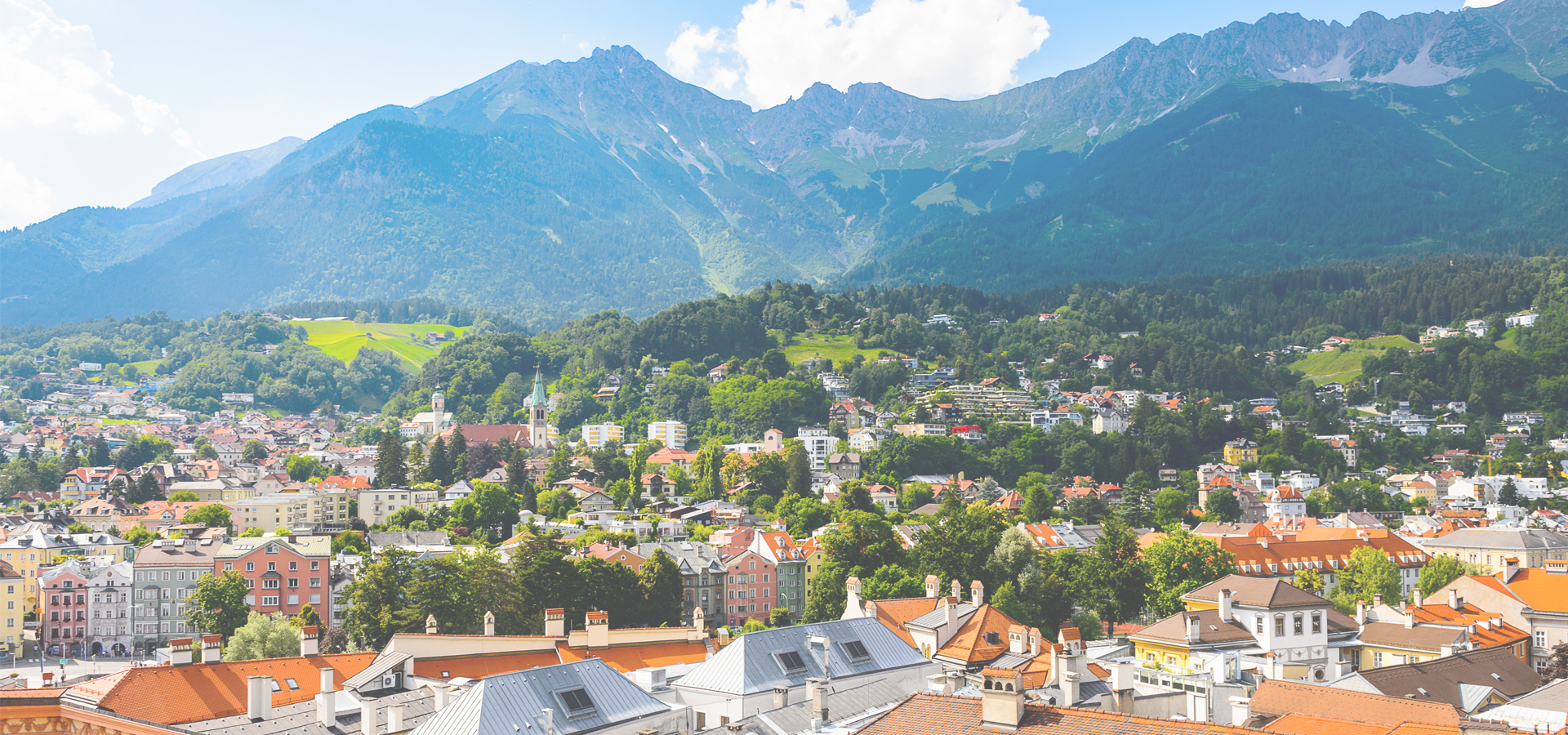Lienz, Tyrol, Austria
🇦🇹 Lienz is a medieval town in the Austrian state of Tyrol. It is the administrative centre of the Lienz district, which covers all of East Tyrol. The municipality also includes the cadastral subdivision of Patriasdorf.
Geography Lienz is located at the confluence of the rivers Isel and Drava in the Eastern Alps, between the Hohe Tauern mountain range in the north (including the Schober and Kreuzeck groups), and the Gailtal Alps in the south. It is connected with Winklern in Carinthia by the Iselsberg Pass. The neighbouring municipality of Leisach marks the easternmost point of the Puster Valley.
By the consistent growth of the city, some smaller villages around – though officially municipalities in their own right – are now widely considered to be suburbs of Lienz. Those suburbs comprise: Thurn, Gaimberg; Leisach, Oberlienz; Nußdorf-Debant; Amlach, Tristach.
History The area of Lienz had been settled since the Bronze Age about 2000 BC. Celtic people lived here from about 300 BC on, mainly as miners, who came under control of the Roman Empire in 15 BC. The area was incorporated into the province of Noricum and Emperor Claudius had a municipium called Aguntum erected near Lienz in the today's municipality of Dölsach. Aguntum became the see of an Early Christian bishop in the 5th century but decayed during the Slavic settlement of the Eastern Alps and the subsequent fights with the Bavarii under Duke Tassilo I around 600. Part of the Slavic principality of Carantania, the area passed under Bavarian and finally Frankish suzerainty during the 8th century.
Lienz itself was first mentioned as Luenzina in a deed issued by the Bishop of Brixen about 1030. The settlement itself, together with neighbouring Patriasdorf, then belonged of the Patriarchs of Aquileia, who were elevated to immediate landlords by Emperor Henry IV in 1077. It was then purchased by the scions of the Meinhardiner dynasty, who held the office of Aquileian Vögte (reeves) and chose Lienz as a residence. From about 1127 they called themselves Counts of Görz (Gorizia).
Located on the important trade route from Venzone in Friuli to Salzburg, the market town of Lienz received city rights on 25 February 1242. In 1278 the Counts finished Burg Bruck, a castle that until 1500 served as their local seat. When the Meinhardiner became extinct in 1500 upon the death of Count Leonhard of Gorizia, their estates were bequeathed to the Habsburg King Maximilian I and finally incorporated into the County of Tyrol. From the status of an Imperial residence, Lienz sank to the insignificance of a provincial town within the Habsburg monarchy.
During the Italian campaigns of the French Revolutionary Wars, Lienz was occupied twice by French troops in 1797. After the Austrian defeat at the Battle of Austerlitz, Lienz with Tyrol passed to the newly elevated Kingdom of Bavaria according to the 1805 Peace of Pressburg. In 1809 it became the administrative centre of a district within the short-lived Napoleonic Illyrian Provinces, but was reconquered by Austrian troops in 1813. Within the Austrian Empire (the Cisleithanian part of Austria-Hungary after 1867) it was the seat of the district of the same name, one of the 21 Bezirkshauptmannschaften in Tyrol.
In November 1918 it was occupied by the Italian Army. After World War I the southern parts of the Tyrol (i.e. Trentino and South Tyrol) were awarded to the Kingdom of Italy under the terms of the London Pact and the 1919 Treaty of Saint-Germain, making the Lienz district of East Tyrol an exclave with no territorial connection to the mainland of North Tyrol. After the 1938 Anschluss of the Federal State of Austria into Nazi Germany, the Lienz district became a part of Reichsgau Kärnten (Carinthia).
On 8 May 1945 British forces occupied Lienz, which together with Carinthia and Styria became part of the British occupation zone. At this time several thousand members of the former Wehrmacht 1st Cossack Division coming from Yugoslavia arrived in and around Lienz. They surrendered to the British troops but were forcibly handed over to the Soviet Union, where most were executed or sent to the Gulag.
Transport Lienz is located at a road junction between the Drautalstraße highway, leading from Carinthia to the Puster Valley in the Italian province of South Tyrol (B100), and the Felbertauernstraße (B108) from Lienz to Mittersill in Salzburg. It is also connected by the Drautalbahn railway line from Villach to Innichen in South Tyrol. The Felbertauerntunnel between Mittersill and Lienz was completed in 1967.
Europe/Vienna/Tyrol

Lienz has a population of over 11,844 people. Lienz also forms the centre of the wider Lienz District which has a population of over 53,833 people.
To set up a UBI Lab for Lienz see: https://www.ubilabnetwork.org Twitter: https://twitter.com/UBILabNetwork
Twin Towns, Sister Cities Lienz has links with:
🇮🇹 Gorizia, Italy 🇺🇸 Jackson, USA 🇹🇷 Selçuk, Turkey🇫🇷 Châtellerault 46.822
🇭🇺 Zalaegerszeg 46.844
🇨🇦 Québec City 46.814
🇫🇷 Châteauroux 46.81
🇫🇷 Le Creusot 46.801
🇦🇹 Deutschlandsberg 46.8
🇨🇭 Yverdon-les-Bains 46.785
🇦🇹 Zell am See 12.8
🇩🇪 Burghausen 12.833
🇩🇪 Bad Reichenhall 12.867
🇩🇪 Pfarrkirchen 12.917
Locations Near: Lienz 12.7667,46.8167
🇦🇹 Zell am See 12.8,47.317 d: 55.7
🇦🇹 Sankt Johann im Pongau 13.2,47.35 d: 67.8
🇦🇹 Spittal an der Drau 13.483,46.783 d: 54.7
🇦🇹 Kitzbühel 12.383,47.433 d: 74.4
🇮🇹 Pordenone 12.659,45.964 d: 95.1
🇮🇹 Belluno 12.217,46.133 d: 86.9
🇩🇪 Bad Reichenhall 12.867,47.717 d: 100.4
Antipodal to: Lienz -167.233,-46.817
🇹🇴 Nuku'alofa -175.216,-21.136 d: 17069.9
🇦🇸 Pago Pago -170.701,-14.279 d: 16382.7
🇼🇸 Apia -171.76,-13.833 d: 16323.3
🇵🇫 Papeete -149.566,-17.537 d: 16378.5
🇺🇸 Hilo -155.089,19.725 d: 12516.2
🇺🇸 Maui -156.446,20.72 d: 12427.6
🇺🇸 Maui County -156.617,20.868 d: 12413.7
🇺🇸 Wailuku -156.505,20.894 d: 12409.3